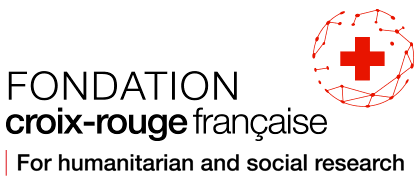Launched by the French Red Cross in 2023, the pilot project of the itinerant Humanitarian Repair Lab has sparked hope, enthusiasm, and numerous questions. To better understand the benefits of these mobile repair workshops for people experiencing extreme poverty, Louise Brosset, the project’s initiator and coordinator for the French Red Cross in Montpellier, initiated a research study as part of the Foundation’s Bénévo’Lab1 program. Jérémie Grojnowski, a PhD in visual anthropology specializing in technological alternatives, has been exploring these questions through his ongoing study titled “Technical Autonomy and Psychosocial Empowerment,” conducted with the Foundation’s support.
We spoke with both of them to better understand the link between Louise’s humanitarian initiative and Jérémie’s academic work in the social sciences. Read the interview with Jérémie Grojnowsli below.
How did you approach this research on the psychosocial impact of repair activities ?
Jérémie Grojnowski : My previous research led me to explore various initiatives in the field of technological alternatives, from open-source software to low-tech practices, self-construction, and self-repair. These initiatives align with a civic approach that encourages a more emancipated relationship with the technologies surrounding us.
The research on the Humanitarian Repair Lab allowed me to expand this reflection on technological alternatives to the humanitarian field. Previously, I had investigated the empowering potential of collective practices aiming at technical autonomy. However, when it comes to people in extreme poverty, particularly those in exile, the notion of empowerment through “doing” specifically through repair activities—takes on a particularly poignant significance.
The dynamics of repair work were familiar to you. What did you discover by studying it in this context ?
JG : The sense of urgency is crucial. Repair activities address essential needs: fixing a bike to get around, a phone to stay in touch with loved ones, mending torn clothing, or repairing shoes damaged by humidity. For people who are isolated and socially excluded, repair activities, especially when conducted in a collective setting like the Repair Lab, become a space for socialization, exchange, camaraderie, and mutual aid. Participants engage with a team that is attentive to their difficulties and capable of offering advice. There’s also a symbolic dimension to repair: fixing an object fosters the idea that one can get a second chance in life. Moreover, restoring an item creates a sense of “small victory,” a pride in having done something oneself or with others, in helping someone else, and, most importantly, in feeling useful. Finally, the act of repair can reawaken professional skills, such as sewing machine operation. This revival of competencies acquired before or during the migration journey helps Repair Lab participants rebuild their relationship with work, bringing renewed self-esteem. To me, this is one of the most powerful aspects of the initiative.
Visual anthropology incorporates audiovisual tools into your field observations. Could you elaborate on your approach ?
JG : Using audiovisual resources allowed me to focus on the interactions between users and volunteers, as well as the gestures and emotions that emerge during repair activities. While reviewing footage, I was struck by how the repair process is not only deeply rewarding for the users but also for the volunteers who assist them, forming meaningful relationships of mutual aid. The camera captures the atmosphere that develops, the collective energy that emerges, and how repair work becomes an opportunity for conversation, trust-building, and connection. This activity creates an environment conducive to encounters, which the film reveals in detail, showcasing its full subtleties.
Are you concerned that the presence of audiovisual equipment might influence behavior ?
JG : Any form of observation can influence the reality being studied, albeit usually to a minimal extent. However, the footage I gathered shows that engagement in repair activities and interactions between participants at the Repair Lab tend to outweigh any awareness of being observed by a camera or researcher. The film-based approach even fostered a form of collaboration with some members of the Repair Lab team. It became a more participatory investigation, where the filmed participants could suggest ideas, highlight certain aspects, and contribute to the filming process.
What practical applications do you foresee stemming from your research ?
JG : The primary goal is to document a pioneering experience in France’s humanitarian sector, capturing the empowering and even “restorative” potential of repair workshops for people in extreme poverty. Specifically, the aim is to identify the psychosocial benefits of repair activities by focusing not only on the itinerant Humanitarian Repair Lab but also, through a comparative lens, on other collaborative repair spaces like Repair Cafés. Can we speak of a therapy through doing? If so, at what level does it operate? What exactly does it heal? What mechanisms are at play? Answering these questions will support the Repair Lab’s growth and could potentially guide the development of similar humanitarian initiatives.
________________________________________________________________________________________________
[1] Bénévo’Lab is a research programme of the French Red Cross Foundation, initiated by the volunteers (paid and unpaid) of the French Red Cross. The idea is to enable them to benefit from scientific support in their reflections on their missions.
Top Photo: © Christophe Hargoues





